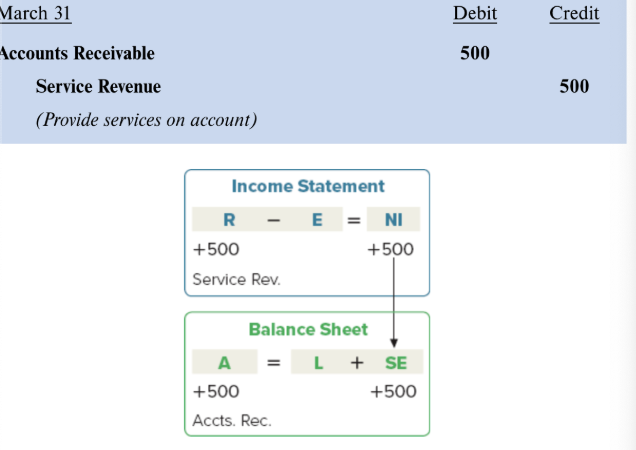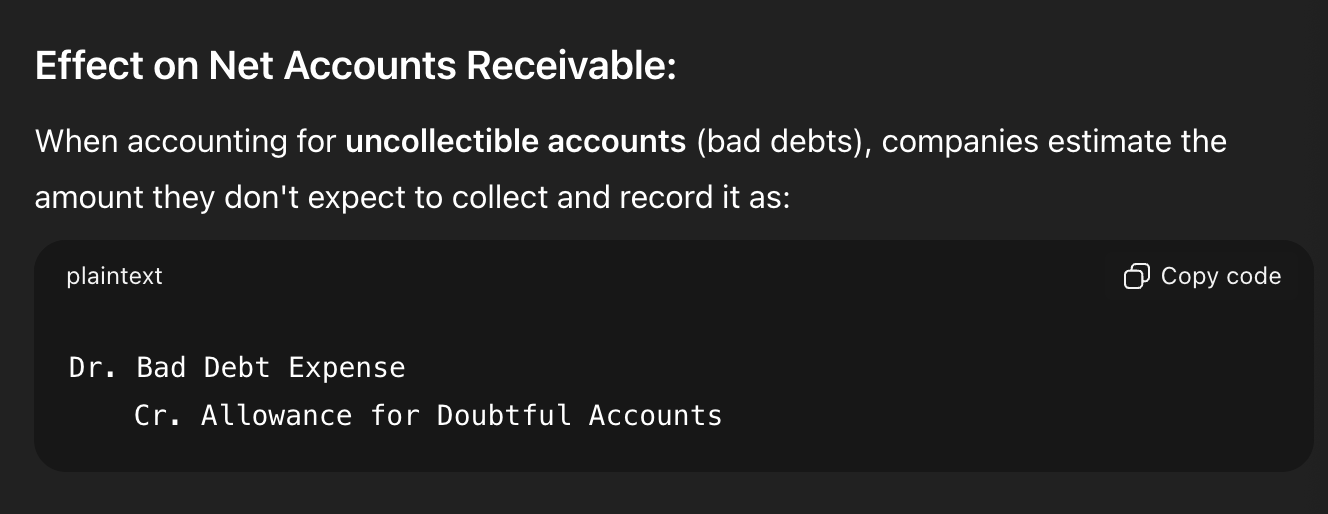Accounting Exam #1 Notes 🎏🧧
1/34
There's no tags or description
Looks like no tags are added yet.
Name | Mastery | Learn | Test | Matching | Spaced |
|---|
No study sessions yet.
35 Terms
What are the two primary functions of accounting? Mod. 1
1) measure business activities of a company (measure company activities)
2) communicate those measurements to external parties for decision making purposes (communicate information to decision makers)
What are the three basic business activities that financial accounting seeks to measure and communicate? To whom, are these activities communicated? (FIO)
Financial Activities
Obtaining funds to operate business:
Borrowing money (loans, etc.)
Selling stocks to investors
Repaying debts or paying dividends
Investing Activities
Transactions involving the purchase and sale of resources that are expected to benefit the company for several years
Purchasing buildings, equipment, land
Selling those assets
Making investments in other businesses
Operating Activities
Day to day functions of business that generates revenue and incur expenses
Selling goods or services
Paying wages
Purchasing inventory
Paying for utilities, rent, etc.
Communicated to external users (investors, creditors, customers, analysts, etc.) to make informed decisions
What are the major legal forms of business organization? What are the principle advantage and disadvantages of each? (think of what type of business org. chuy has)
Sole Proprietorship (owned and operated by 1 individual)
Advantage: Easy to form, full control
Disadvantage: Unlimited personal liability
Partnership (Owned by 2 or more individuals, share profits/responsibilities)
Advantage: Shared resources and skills
Disadvantage: Unlimited liability (general)
Corporation (A separate legal entity owned by shareholders)
Advantage: Limited liability, capital access
Disadvantage: Double taxation, complex setup
LLC (Limited Liability Company) (Hybrid business combing features of a corporation and a partnership)
Limited liability, tax flexibility
Varying state rules, possible limits
Provide a basic definition for each account type: asset, liability, stockholders equity, revenue, and expense
Asset: A companies resources that have value
Liability: Amounts owed to others
Stockholders equity: What the shareholders own
Revenue: Money earned / recognized from sales/services given
Expense: Cost of selling the product or services
What is the accounting equation? If I give you two of the inputs, you’d be able to compute the third. Represents relationship between what a company owns (assets) and how those assets were financed (liabilities and equity)
Assets = Liabilities + Stockholders Equity
How is net income (loss) calculated?
Net less = Revenues - Expenses (COGS + Operating Expenses + Interest + Taxes)
What are the 4 basic financial statements and which accounts appear in each?
Income Statement
Reports company’s revenues and expenses over an interval of time (shows if company was able to generate enough money to cover the expenses of running the business)
Statement of stockholders equity
Summarizes change in stockholders equity over an interval of time
Balance Sheet
Statement that presents financial position of company on a particular date
Statement of Cash flows
Measures activities involving cash receipts and cash payments over an interval of time
What is meant by GAAP?
Generally Accepted Accounting Principles; set of standardized rules, guidelines, and procedures used in the US for financial accounting and reporting.
Explain the difference between internal and external transactions. (Mod.2)
Internal: Transactions that occur within the company
External: Transactions conducted between the company and a separate economic entity
Ex: paying salaries to an employee, borrowing money from a bank, purchasing supplies from a vendor, etc.
What is the chart of accounts?
Organized list of account names and numbers that a company uses to categorize and track all its financial activities.
Each account in COA represents a specific type of asset (cash, accounts receivable, inventory), liability (accounts payable, loans payable), equity, revenue, or expense
What are the normal balances in each account type? (ie. asset, liability, stockholders’ equity, revenue and expense) (which is debit/credit, which increases and decreases with which)
The “normal balances” are the ones they’re increasing w/
Dividends
Increase w/ Debit - Decrease w/ Credit (DEA)
Expenses
Assets
Liabilities
Increase w/ Credit - Decrease w/ Debit (LOR)
Owners Equity
Revenue
What’s a journal? What’s a journal entry?
Journal: Provides summary of all debits and credits made during the period (in chronological order)
Journal entry: The place you enter the info
Explain the phrase “debits equal credits”
Because of the double-entry accounting system, which is based on the idea that every transaction affects at least two accounts and keeps the accounting equation (Assets = Liabilities + Equity) in balance.
Every value that goes in (debit) must come from somewhere (credit), ensuring the books stay balanced.
What does the T-account represent? What’s the left & right side called?
T account represents: a visual aid to show how a transaction affects individual accounts
Left side: Debit
Right side: Credit
What’s trial balance?
A list of all accounts and their balances at a particular date, showing that total debits equal total credits
What is the revenue recognition principle? (2 types of revenue recognized) Chapter 3
Accrued Revenue: revenue recognized BEFORE cash is received
Deferred Revenue: recognized AFTER cash is received
What type of revenue is recognized before cash is received and which is recognized after cash is received?
Accrued Revenue
Deferred Revenue
What is the difference between cash and accrual basis accounting?
Cash basis accounting: recorded ONLY when cash is RECEIVED or paid
Accrual Basis Accounting: revenues/expenses are recorded when they are earned/incurred, regardless of when cash changes hands
Ex: You send an invoice in April and get paid in May —> But atill record revenue in April
What are the adjusting entries under accrual basis accounting? (Theres 4)
Accrued Revenue: revenue recognized BEFORE cash is received
Deferred Revenue: recognized AFTER cash is received
Accrued Expense: Expense recognized before cash is paid
Deferred Expense: recognized AFTER cash is paid
What are temporary vs permanent accounts? Which affects what financial statement?
Permanent: Carry forward their balances from one period to the next
Temporary: For these accounts we transfer each balance at the end of the year to ONE account (retained earnings) and then ALL revenue, expense, and dividend accounts start with $0 at beginning of year
So move money to one big account so each balance could start at $0 (restarts)
How does the initial (unadjusted) trial balance differ from the adjusted trial balance?
Unadjusted trial balance lists account balances before any adjusting entries are made - less accurate picture of financial position
Adjusted trial balance: include adjusted entries, reflect a more accurate and complete picture of the company’s financial position
Explain what is meant by the term classified when referring to a balance sheet
Classified just means that the financial info is organized into subcategories or groups that make balance sheet easier to understand and analyze
What is internal control? Why should a company establish a system of internal controls?
Internal control: Served to safeguard the companies assets and improve the accuracy and reliability of accounting information
What is a bank reconciliation? How can it help in determining whether proper controls over cash has been maintained?
Bank reconciliation: Matches the balance of cash in the bank account with the balance of cash in the company’s own records
Can help maintain control of cash
When preparing a bank reconciliation, what types of transactions will need to be accounted for to make it balance?
Deposits, Credits, Withdrawals & debits, deposits in transit, outstanding checks, bank fees, interest earned
What are credit sales? How are they recorded (what accounts are debited/credited) Chapter 5
Credit sales: Transactions where companies provide goods or services to customers, on account not for cash (the literal meaning of credit sales)
Typically recorded in accounts receivable and revenue

Why do some companies use trade discounts? How are they recorded? Hint: look at the second word of trade discount
Can be a way to represent a reduction in a listed price of a good or service
Appeal to larger customers or consumer groups to purchase from company
A way to change prices without publishing a new price to list or to disguise real prices from competitors
What is meant by sales returns and allowances? How are they recorded?
Sales Return: When customer returns goods they previously purchased
Sales Allowances: When customers leep the goods but receive a partial refund due to defects, errors, or other issues

What is the difference between a trade receivable and a non-trade receivable
Trade receivable = from customer (sales)
recorded under accounts receivable
Non-trade receivable = from others (non-sales)
transactions outside regular sales activities
recorded separately from trade receivables
Can you explain the purpose of estimating future uncollectible accounts (bad debts)?
Uncollectible Accounts (bad debts): Customers’ accounts receivable we no longer expect to collect
This allows the company to create a buffer of how much money they can “lose” without it causing actual harm to the company
How does the accounting for uncollectible accounts (bad debts) affect the amount reported for net accounts receivable?
They record bad debt (as image)
Net Accounts Receivable = Accounts Receivable - Allowance for Doubtful Accounts
Allowance reduces the amount reported as net accounts receivable, giving a more accurate picture of what the company expects to actually collect

What two methods exist for adjusting for uncollectible accounts receivable? Which is acceptable under GAAP?
Allowance Method (allowed by GAAP)
Direct-write off method
What is the formula for accounting for bad debt expense?
Bad Debt Expense = Estimated Ending Balance in Allowance for Doubtful Accounts − Current Balance in Allowance Account
What are the key differences between an accounts receivable and a notes receivable?
Accounts Receivable: Represents amounts owed to a company by its customers from the sale of goods or services on account.
Notes Receivable: They are more formal credit arrangements evidenced by a written debt instrument, or note (typically arise from loans, other assets/services, sale of merchandise) (still amounts owed just from other stuff)